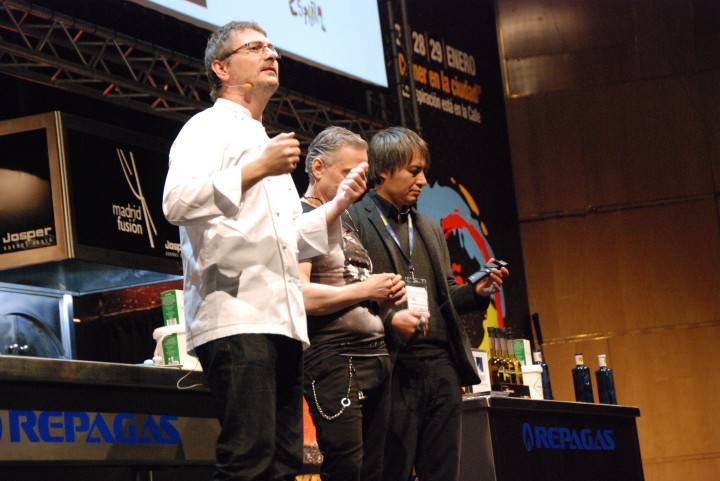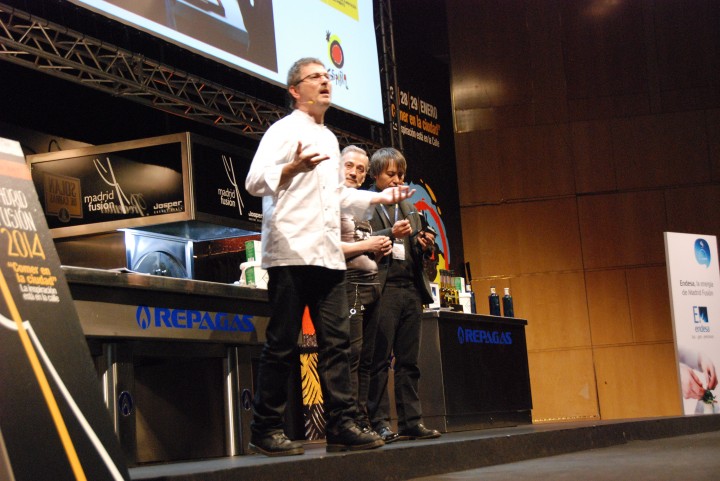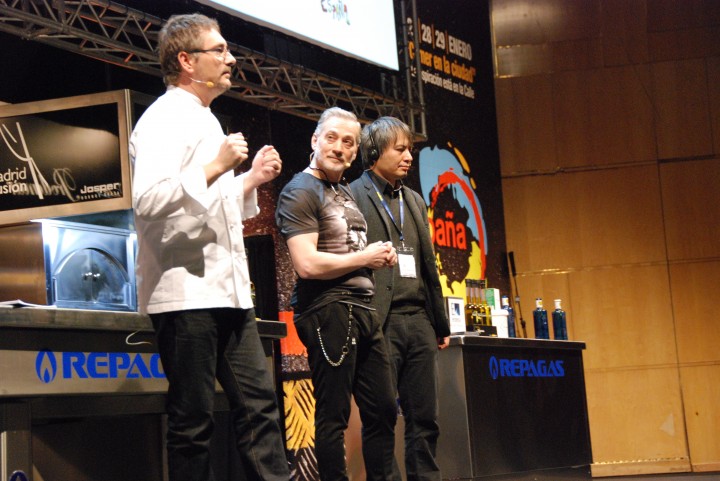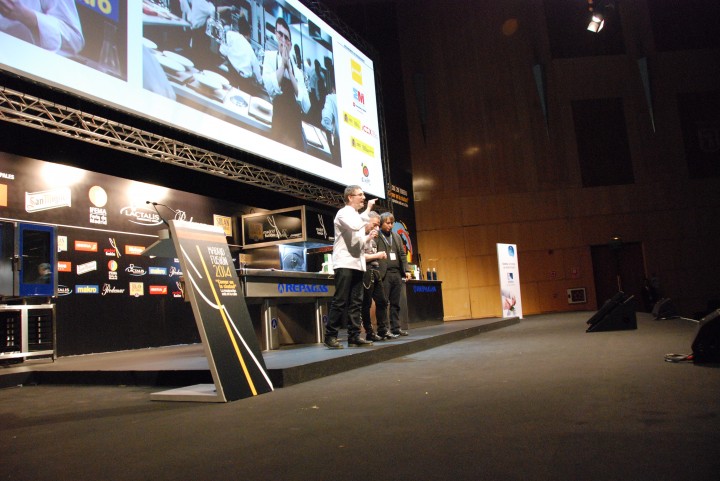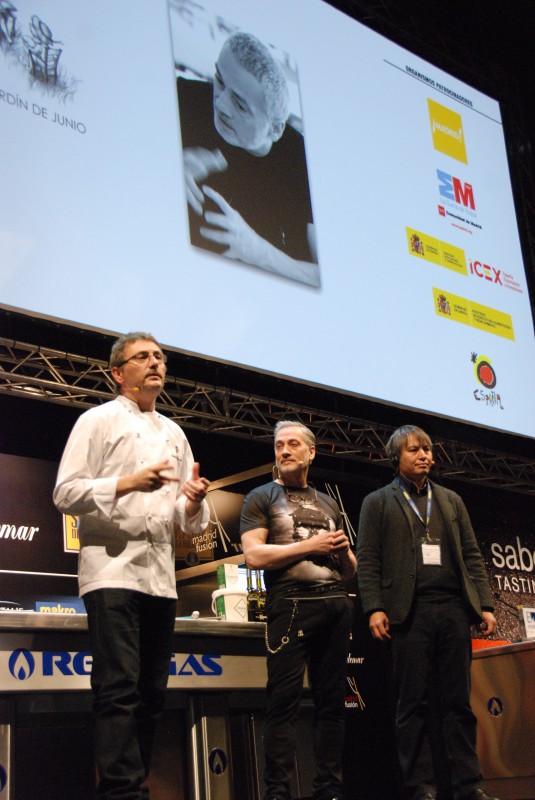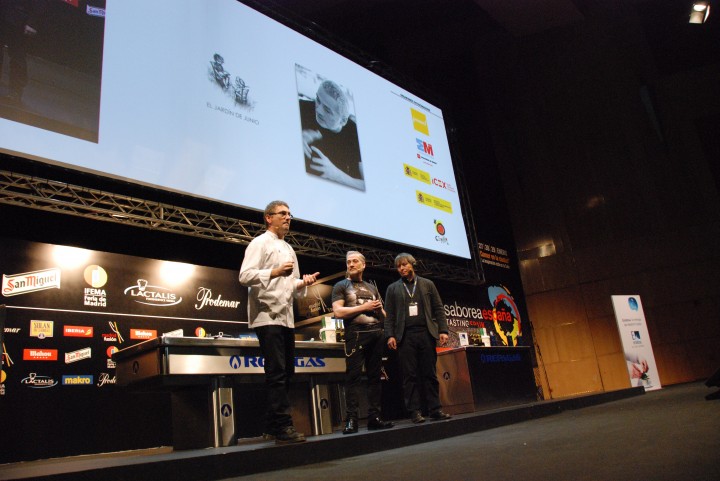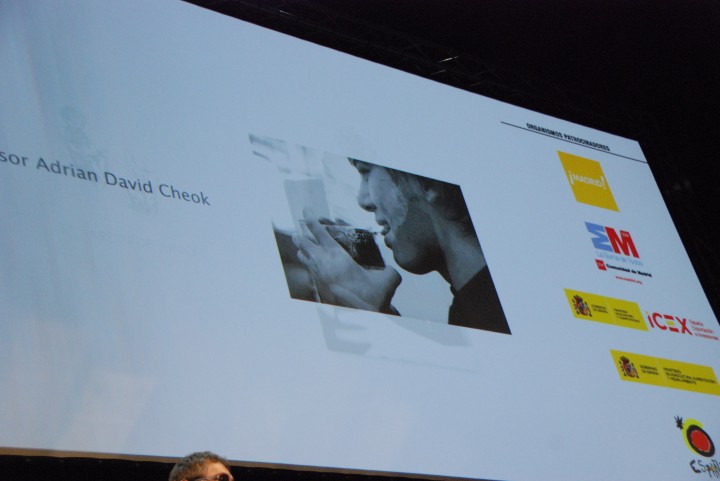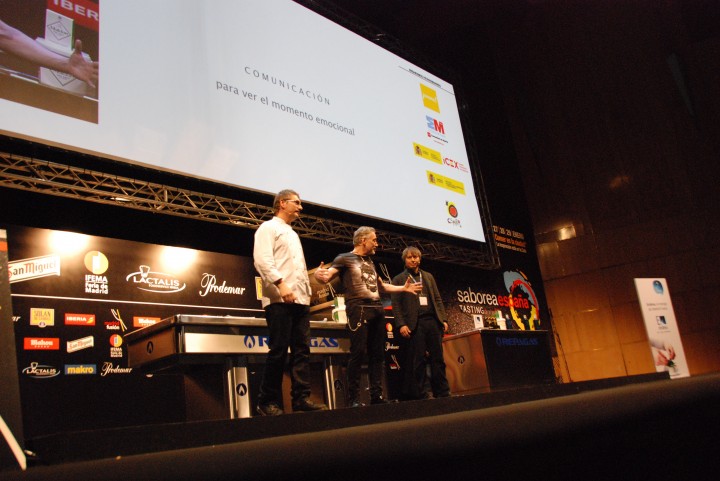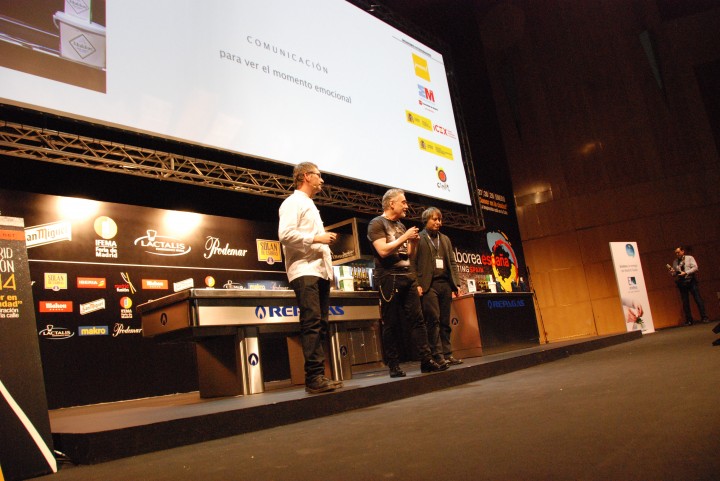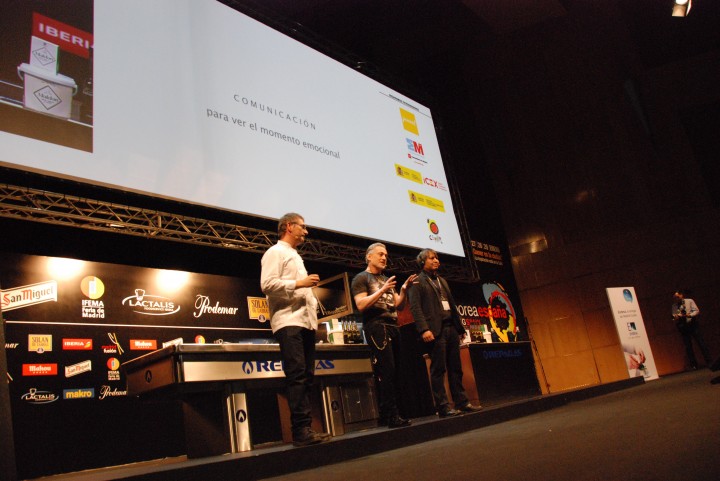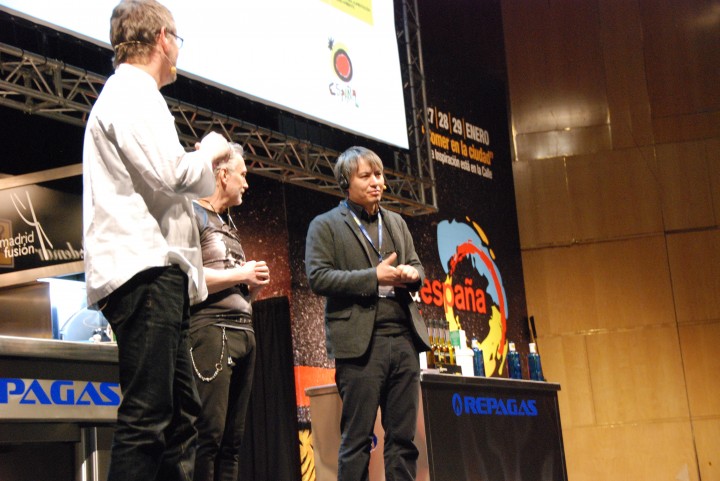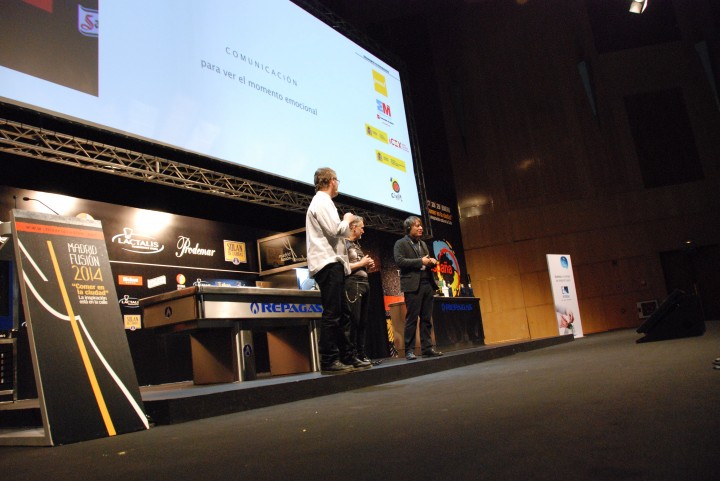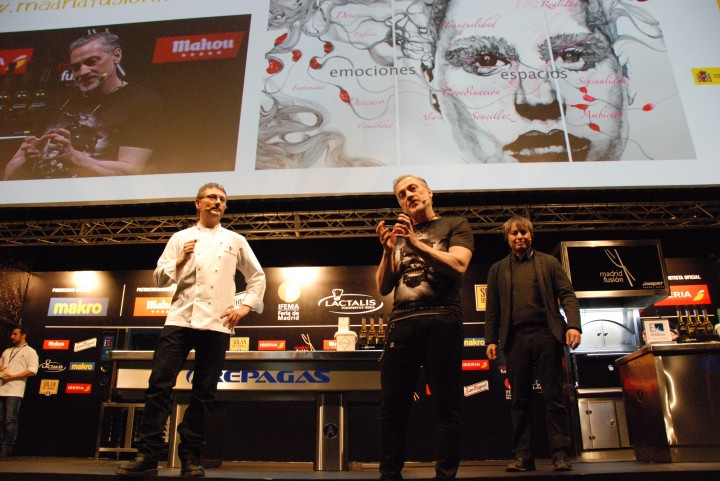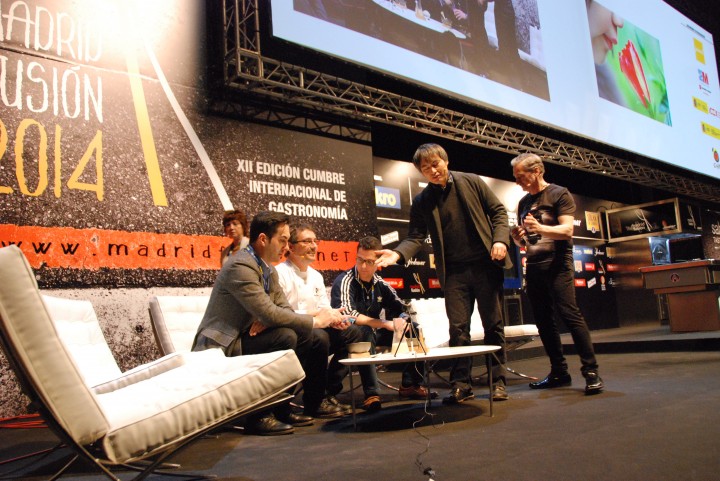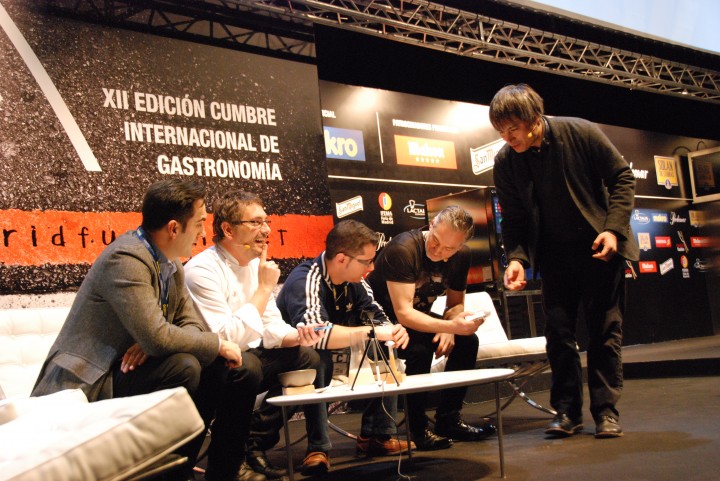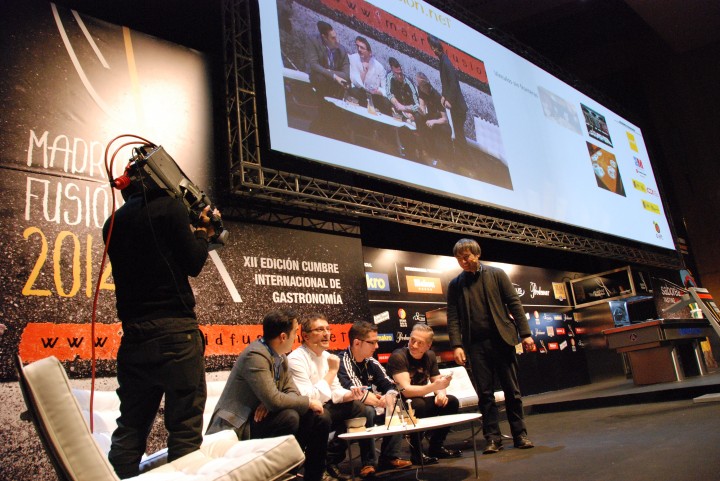Category Archives: Press
City University London’s Professor Adrian Cheok spearheads the creation of the revolutionary Digital Food app
Mobile gadget emitting food flavours will be launched at Madrid Fusion on 28th January.
City University London News Release
Wednesday 22nd January 2014
City University London’s Professor Adrian Cheok spearheads the creation of the revolutionary Digital Food app
Mobile gadget emitting food flavours will be launched at Madrid Fusion on 28th January.
City University London announces the collaboration of Professor of Pervasive Computing, Adrian Cheok, in Madrid Fusion on28th January 2014, the most important event in the world of gastronomy.
In Spain’s capital city, Professor Cheok will join leading Michelin starred chef, Andoni Luiz Aduriz, of Mugaritz restaurant, San Sebastian and Dr Luis Castellanos, Founder and President of “El Jardín de Junio”, to unveil Scentee, a new mobile phone app and device that is attached to an Apple iPhone to permit the user to virtually prepare a recipe from the restaurant; the aroma from the finished dish is then released from the phone.
Professor Cheok says the new device will be revolutionary:
“The Digital Food app opens up new vistas for people around the world who may not have had the opportunity to physically dine in the restaurant to virtually experience the real smell of gourmet food prepared by one of the world’s top restaurants and chefs. The revolutionary new device brings the sense of smell to mobile phone communications.”
Professor Cheok, Chef Andoni and Dr Castellanos are proposing novel methods of digital olfaction and gustation for internet interaction, specifically for creating and experiencing the digital representation of food, cooking and recipes.
City researchers are spearheading new methodological approaches for digitally stimulating the sense of taste to enable remote communication through the sense of taste and smell. They aim to obtain a controllable and accurate actuation of taste and smell using digital methods for the benefit of industry and academic research and to improve the lives persons with smell and taste disabilities. The research will also improve the everyday lives of people wanting to further enhance their social networks with the addition of these modalities.
The Digital Food app being released at Madrid Fusion 2014 will lead to new innovations and industries for digital and internet communication, entertainment, office automation, and health therapy, using digitized mobile smell.
In November 2013, Professor Cheok and his research team were presented with the title of Honorary Experts for their participation as finalists in the Telefonica Hacking Bullipedia competition.
Radio Interview with Peter Warren on Password, London’s Resonance 104.4FM

London’s Resonance 104.4FM
Password Radio Show: http://www.futureintelligence.co.uk/fis-password-radio-show/
The PassWord radio programme is the UK’s only regular-hour long foray into the world of science and technology and not only tells you about the latest developments in the area but what those technologies mean to you.
The radio show is produced by Jane Whyatt, an award winning radio producer for the BBC, and presented by Peter Warren, an award winning investigative journalist who has worked for the BBC and the Sunday Times Insight team, Password is a fascinating insight into the high-tech world that we now all inhabit. To hear our weekly technology radio programme PassWord with Peter Warren tune in to London’s Resonance 104.4FM or www.resonancefm.com at 1530 GMT on Sundays. You can listen live to Radio Castle’s PassWord show on Mondays 1100-1200 online www.radiocastle.com.
Download MP3 clip of radio show.
Future Technology Trends in 2014 in Computer Weekly by Adrian David Cheok

FUTURE TECHNOLOGY TRENDS
- Drones in the sky to become mainstream. Delivery of goods by drones
- Virtual reality to become mainstream with Oculus Rift
- Electric and driverless cars to take off
- Smell communication by computer
- Humans will increasingly fall in love with virtual characters
- Stock trading will become crowd sourced, with the ability to follow thousands of traders in real time and copy their trades in real time based on performance
- Brain project in the US will map the human brain to allow new breakthroughs such as neural implants
- 3D printing will become mainstream in the workplace and at home
- Jet pack transportation will enter the market
- Every kid will be able to build their own electronics
Source: Adrian David Cheok, professor of pervasive computing at City University London
A taste of what’s to come from smartphones – NZ Herald News
http://www.nzherald.co.nz/technology/news/article.cfm?c_id=5&objectid=11178602

By Rhodri Marsden
[pullquote align=center]
Scientists are working on ways that websites and apps can communicate touch, taste and smell. But, wonders Rhodri Marsden, will a hyper-connective multisensory internet be more than we can stomach?
[/pullquote]

Websites and apps are frequently described by their creators as offering a “rich experience”. The beautiful designs, intuitive layouts and compelling interactivity may well be engaging and satisfying to use, but when they’re hailed as being a “feast for the senses”, it’s evident that they’re a feast for merely two.
Online entertainment is about sight and sound; everything is mediated through a glass panel and a speaker, leaving us well short of being immersed in an alternative reality. But with studies having demonstrated that more than half of human communication is non-verbal, scientists have been working on ways of communicating touch, taste and smell via the internet, and many of those experiments have been gathering pace.
“What do you smell?” asks Adrian Cheok, professor of pervasive computing at City University London. The whiff of melon is unmistakable; it emerged from a tiny device clipped to an iPhone and was triggered by Cheok standing on the other side of the room. “Right,” he says. “These devices have been commercialised in Japan – they’re selling 10,000 units a month – and they’re bringing smells into a social interface.”
It’s still early days with this technology; the device I’m holding is similar to an inkjet printer in that it contains a melon “smell sachet”, and when it’s empty you have to buy another one. Nor is it a particularly new concept. In 1999, Wired magazine ran a front cover story about a company called Digiscents that had produced a USB “personal scent synthesiser” for your computer called the iSmell. Digiscents folded two years later. But the technology that failed to excite us back then now looks slightly less gimmicky in the context of modern smartphone usage, with its super- connectivity and emoticons galore.
On the surface, Cheok’s projects are fun, almost throwaway. “I’ve worked on hugging pyjamas,” he says. “They consist of a suit you can put on your body to virtually hug someone, remotely.
Then we have these small haptic rings; if I squeeze my ring someone else will feel a squeeze on theirs through the internet – like a remote sensation of hand-holding.”
He’s also been working on a device with electrodes that excites taste receptors on the tongue, producing an artificial sensation of taste in the brain.
In the shorter term, the applications of these devices seem slightly frivolous; Cheok’s rings, for example, are being turned into a product that the music industry plans to sell to fans. “You go to the concert,” he says, “the pop star would send a special message, and if you’re wearing the ring you’d get a squeeze on your finger.” I grimace slightly, and he laughs.
“Fortunately or unfortunately,” he says, “that’s where they’ve decided that the money is – but we need to explore the boundaries of how these things can be used, because scientists and inventors can’t think of all the possibilities. For example, Thomson Reuters has been in touch to ask about using the rings to send tactile information about stock prices or currency movements.”
Our transition to an internet of all the senses is evidently dependent on the breadth of information that can be conveyed from one person to another as a series of zeroes and ones. “You have to find a way of, say, transmitting smell digitally, without using a sachet,” says Cheok. “So I’m working with a French neuroscientist, Olivier Oullier, on a device which can produce an artificial sensation of smell through magnetic actuation. The olfactory bulb in our nasal cavity that’s responsible for smell can be stimulated by pulsing magnetic fields. So this is about directly exciting the brain’s neural path by bypassing the external sensor – in this case the human body.”
This immediately plunges us into what seems like incredibly futuristic territory, where brains are communicating sensory information directly with other brains across digital networks. But it’s already been demonstrated by the synthetic neurobiology group at MIT (Massachusetts Institute of Technology) that optical fibre can be connected to neurons, and Cheok is excited about where this may lead in the relatively short term. “We will have direct connection to the brain within our lifetime,” he says, “although what level that will be I’m not sure. Physical stimulation of neurons may not produce the effects that we would hope for and predict.”
Few of us can conceive of the pace with which technological power is developing. Ray Kurzweil (author, futurist, and a director of engineering at Google) predicts that by 2025 we’ll have a computer which has the processing power of the human brain, and by 2045 it’ll have the processing power of six billion brains – ie, everyone on the planet. Cheok sees these as hugely important tipping points for society. “If you’re able to download your brain to a computer, there are major philosophical questions that we’ll have to deal with in the next 30 years, such as whether we’re human, or whether we’re computers.”
Society will also have to work out how it’s going to handle the hyper-connectivity of a multisensory internet – bearing in mind that we can already become deeply frustrated by the few kilobytes of information contained within the average overloaded email inbox. Text messages that are not replied to already provoke consternation – what about unreciprocated touches, provocative odours or unwanted tastes?
“Our brains haven’t changed to cope with infinite communication,” says Cheok. “We don’t have a mechanism for knowing when there’s too much, in the way that we do when we’ve eaten too much food.”
Marshall McLuhan, the Canadian philosopher of communication theory, famously used the term “global village” to describe the effect of connected media upon the world’s population; Cheok believes that new sensory-communication channels will demonstrate how prescient that prediction was. “For most of human history, we didn’t have privacy,” he says.
“Everyone knew who was doing what. And these developments will mean that we become more and more open – the end of secrecy, almost bringing us back to the way that life used to be in hunter-gatherer times. Except, of course, it’s now global.”
The implications of the work of Cheok and his contemporaries seem to sit midway between exciting and terrifying, but in the shorter term it’s about focusing on relatively mundane objectives, such as emitting multiple odours from a smartphone. “People will get used to this new mode of communication,” says Cheok, “and develop new languages. We don’t yet have a language of smell, or of touch; exactly the same pressure in terms of a touch can have a completely different response in the brain, depending on context. But combined with emotion and the subconscious, it’ll bring a heightened sense of presence. I want us to be able to eat together across the internet. I’ve no idea what that will feel like,” he adds, smiling, “but I’ve always believed that human communication goes far beyond the logical.”
– Independent

